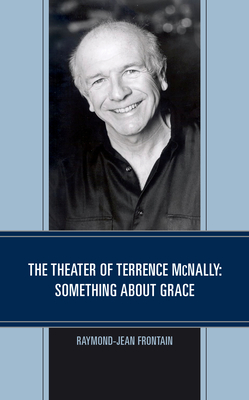 The Theater of Terrence McNally: Something about Grace
The Theater of Terrence McNally: Something about Grace
by Raymond-Jean Frontain
Fairleigh Dickinson Univ. Press. 374 pages, $115.
THE LATE Terrence McNally [who succumbed to covid-19 after this was written]has hardly been neglected or undervalued. Many of his works, including The Ritz (1975), Frankie and Johnny in the Claire de Lune (1982), Kiss of the Spider Woman (1992), Love! Valour! Compassion! (1994), Master Class (1995), and Corpus Christi (1998), are familiar to even casual theatergoers. His many awards include four Tonys and three Drama Desk Awards, and he was recently elected to the American Academy of Arts and Sciences.
But for all the acclaim that McNally has received from his colleagues in the theater, academic critics have paid far less attention to his work. Perhaps this is because the sheer size of McNally’s corpus and its great range make it difficult to grasp the whole. In any case, critics have generally failed to recognize that his varied works—including numerous short plays, books for musicals, screenplays, TV scripts, and opera libretti—are unified by a consistent preoccupation with particular themes, recurring motifs, and a restless experimentation with form and genre.
Given this relative neglect of his work, Raymond-Jean Frontain’s new book, The Theater of Terrence McNally: Something about Grace, is especially welcome. The culmination of many years of study of McNally’s work and of his voluminous papers at the Humanities Research Center at the University of Texas, the book offers an insightful assessment of the playwright’s entire career. Frontain makes the best case yet for the unity of McNally’s body of work and for the significance of his achievement. Frontain’s comprehensive approach allows him to make connections among works both celebrated and obscure.
Frontain documents McNally’s growth as a dramatist through four stages as he develops from a protégé of Edward Albee (who was his partner in the crucial years, 1960–’64, when Albee was becoming one of the most influential playwrights in the world) to a dramatist obsessed with the redemptive power of theater itself. In Frontain’s view, the movement of McNally’s career has been toward a “Theater of Compassion” that exists in contradistinction to Albee’s “Theater of Cruelty.”
From this perspective, McNally’s earliest plays testify to the pain of living in a profane world, while in his second stage he embraces the world of farce in which terror and repression are diminished in the face of laughter. In the third stage, coinciding with the AIDS crisis—when he lost two of his closest friends, and under the influence of Hinduism—McNally discovers how theater can launch a community from profane to sacred time. Frontain argues that the breakthrough represented by this period “resulted in the most poetically expressive American theater since that created by Tennessee Williams, a theater that seeks the spiritual redemption of player, playwright, and audience.” Frontain sees McNally’s fourth (and continuing) stage as one in which the playwright meditates on the redemptive power of artistic creativity.
Pointing to parallels between McNally’s themes and those of contemporary theologians (whom the playwright has probably never read), Frontain makes a case for McNally as a profoundly religious writer. More convincing would have been a recognition of McNally as a humanist writer pursuing a spiritual quest for connection with others à la E. M. Forster. Frontain rightly points out, notwithstanding his rejection of the label “gay playwright,” that McNally has forthrightly depicted a wide range of gay characters and life stories over the past six decades.






